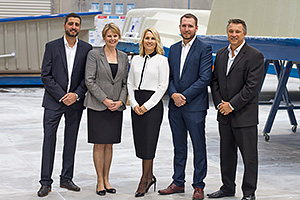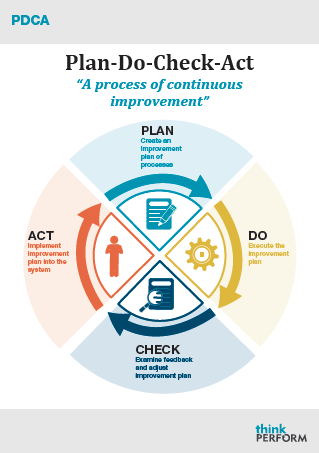The most successful organisations in today’s competitive marketplace produce quality goods and services in a timely manner. They produce them for the least cost whilst creating the least amount of Waste. Manufacturers who have previously undertaken a Brisbane lean training course are now forward thinking organisations achieving consistent, sustainable and profitable results. Lean Waste reduction, through identifying the 8 Wastes of lean, is one of the key initiatives that these Brisbane and Queensland organisations are using to improve their long term viability and profitability.
A high-quality product or service that meets the customers’ expectations is what all businesses aim to provide. To achieve this, businesses have to continually improve the way or the processes they use to make and deliver their products and services to their customers. They must do this for the same cost or for less cost than their competitors, and deliver them in line with customer requirements to remain competitive. Reducing all forms of Waste within production and other processes is the best way to achieve this.
WHAT IS WASTE?
Waste costs businesses and customer’s money. Competitive organisations systematically identify and remove Waste. To remove Waste, people must first understand what lean Waste principles are and where Waste exists. Waste identification and reduction is the core concept of Lean course in Brisbane. All lean tools are designed to either help people see Waste or help them reduce Waste.
An activity does not add value if the customer is not willing to pay for it, or to pay more money for it. Falling short of customer expectations is often caused by Waste. Going beyond their expectations can also create Waste. Often referred to as Non-Value Adding activities (NVA), Waste can be defined as any activity that the customer would be unwilling to pay for. Customers will not pay for quality they don’t need and they will not pay when the quality they require is not provided.
Removing Waste from processes is not only one of the best ways businesses can increase profits, it also improves safety. Reducing Waste can be viewed as pro-active hazard identification and elimination. Removing Waste always produces a safer workplace.
EIGHT FORMS OF WASTE
There are eight common forms of Waste. These can be easily remembered using the D O W N T I M E acronym.
D owntime
O verproduction
W aiting
N ot Utilising Employees
T ransport
I nventory
M otion
E xcessive Processing
Every person within a competitive organisation should be responsible for the identification and elimination of Waste. You will be using activity sheets to help you identify Waste within your own workplace. Remember, the most important step to eliminating Waste is learning how to recognise it.
You may find and want to eliminate some Wastes as soon as you identify them. Use the Low Cost/No Cost Ideas activity sheet to record Waste that is easily fixed. If these are simple and easy to fix – just fix them. Don’t Waste time when eliminating simple Waste.
Other Wastes may require further analysis to identify and eliminate the root cause. Do not make superficial changes if the root cause can be completely eliminated. Don’t automate or introduce changes that may only cover up the Waste.
First and foremost, learn to see the D O W N T I M E. As you complete a walk through your work area and a process mapping activity, your Facilitator will assist you to identify both simple and more complex types of Waste. Record these on your Waste Identification Sheet.
Defects
The Waste of Defects is one of the easiest Wastes to identify. Anything that makes a product or service less valuable to a customer or leads to rework, replacement, salvage or scrap can be considered a defect. If not addressed, this form of Waste can potentially lead to the loss of valued customers. Defects also create unnecessary costs through the time taken to replace or rework and inspect items a second time. For example, production runs sometimes have to be rescheduled in manufacturing businesses, which then impacts on other scheduled runs.
Overproduction
Overproduction occurs when a product is made or process is performed before it is required. Providing higher quality products or services than required is also considered Overproduction. Overproduction is a Waste because it includes:
• Causes delays in the flow of materials, products and information through the value chain
• Uses up unnecessary resources – raw materials, time, technology and human effort
• Increases the lead time
• Ties up money in unnecessary stock
• Uses storage space
• Leads to product being dumped or sold cheaply
Waiting
Waiting is the easiest Waste to recognise. In all workplaces any time not used effectively is a Waste. The most common forms are Waiting for materials to arrive, Waiting for information to perform the task, and Waiting for the previous process to be completed. There are other forms of Waiting that can be just as costly. Idle time is created when anyone has to wait for information, approvals and decisions, and when teams have to wait for vacant positions to be filled.
Your organisation may have to pay for raw materials that wait to be processed and for people Waiting for machines, parts, information or other resources. The business can either charge more for what they make or be prepared to make a smaller profit. If customers have to wait for their product or service they may decide to choose another provider.
Once wait time has been identified, eliminating it is usually a straightforward process. Removing bottlenecks is a typical strategy used to reduce Waiting in processes. You may identify more than one bottleneck when you work with your team to undertake a process mapping activity in your work area.
Not Utilising Employees
Not utilising the knowledge and skills of employees is a major area of Waste. When people have greater skills and knowledge than their role requires, their potential contribution to the organisation is Wasted. Ways employees can be underutilised:
• They are not encouraged to identify problems and come up with ideas for improvement
• They are only using their core skill for a small percentage of their work day and wasting the rest of the day, Waiting, searching or walking
• They do not receive appropriate training to carry out the work they are employed to do
• They are not provided with the tools and resources they need to carry out their work efficiently and effectively.
When employees are not involved in improvement activities or problem solving, opportunities are lost. The best people to suggest and recommend changes and improvements to current systems and processes are actually the people doing the job.
Transport
Any time that materials, tools, work in progress or completed work are moved, Transportation occurs. While it is not possible to remove all Transportation from processes, it is possible to reduce the large amount of Transportation Waste that occurs in many organisations. Transportation is Wasted when:
• Materials and information are shifted many times – double handling
• Finished work is shifted multiple times
• Goods are Transported to a store before going to the customer
• Items are moved with unnecessary Transportation or in large batches
Transporting products between processes adds no value to the product. However, resources that cost money are used to move them. Movement not only contributes to Waiting time, it can also cause damage. Storage is costly and can sometimes cause quality to deteriorate. The need to Transport materials (and the associated costs of equipment and manpower) should be reduced wherever possible.
Inventory
Inventory or stock is often identified as the most serious Waste as it hides and often creates other forms of Waste such as Defects, Overproduction, Transportation and Waiting. Stock that the company stores for any length of time can include:
• Raw materials
• Partly finished goods (WIP)
• Finished goods
Some accounting systems view Inventory as an asset, but it can also be seen as a liability if it has not been ordered or pre-sold. When components or parts are made a long time before they are needed, they have to be stored. When parts are made just before they are needed, the time they are in the Inventory is short, which normally reduces the need for Transportation.
As you complete the VSM activity, look for what excess Inventory is evident, and how it could be reduced.
Motion
Every time we are forced to move, stretch or go and search for a tool, part or information to do our job, we are wasting Motion. Motion Waste happens:
• When double handling occurs
• When information, tools and equipment are not stored at the point of use
• When products or materials are not stored at the point of use and in the correct quantities
• When you have to spend time searching for items or sorting through items for the correct one
Motion Waste can also cause Waiting if equipment needs to be adjusted or fixed or if products are being changed. It can also create considerable frustration if the correct information, part or tool cannot be found.
To reduce Motion Waste, review the amount of bending, stretching, walking and lifting that you and other team members are doing. An added advantage is that by avoiding unnecessary physical movement, employee health and safety is protected and time is not wasted.
Excessive Processing
In business environment, processing activities are typically viewed as value adding. However, this is not always the case. When you view your current processes from a Waste perspective, you may see that some steps are actually unnecessary or over-complicated. Some simple examples of over processing Waste are the use of excess packaging or creating both paper and electronic records to store the same information. Any steps that are unnecessary or over-complicated create Excessive Processing Waste. Excessive or unnecessary data entry or paperwork is another form of processing Waste. Excessive Processing Waste can include:
• Using excess energy and resources
• Adding unnecessary cost for no return on investment
• Creating yield losses and Waste materials
• Creating wear and tear on equipment
• Using employee time on tasks that do not add value
Creating a process map is one of the most useful tools that can be used to identify and eliminate over processing. When you and your team complete this activity, look for opportunities to consolidate, combine and streamline processes.
Empowering your employees with the required skills and tools to identify waste is a key component of Lean training.
Get in touch with us today to discuss your options.







